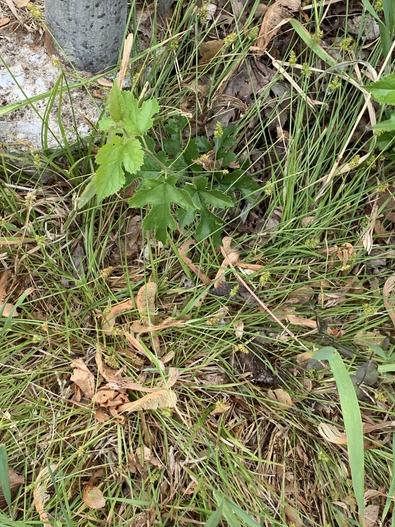Leavenworth’s Sedge
(Carex leavenworthii)
Leavenworth’s Sedge (Carex leavenworthii)
/
/

Daniel J. Layton
CC BY 4.0
Image By:
Daniel J. Layton
Recorded By:
Copyright:
CC BY 4.0
Copyright Notice:
Photo by: Daniel J. Layton | License Type: CC BY 4.0 | License URL: https://creativecommons.org/licenses/by/4.0 | Uploader: Nonenmac | Publisher: Wikipedia Commons





























Estimated Native Range
Summary
Carex leavenworthii, commonly known as Leavenworth’s Sedge, is a perennial herbaceous plant that is evergreen in warmer climates. It is native to a variety of habitats including open woodlands, grassy meadows, wet prairies, and along stream banks in the Eastern and Central United States, as well as Ontario, Canada. This sedge typically grows to a height of about 0.5 feet (0.2 meters) with a spread of 1 foot (0.3 meters), forming dense tufts of fine-textured, grass-like foliage.
Leavenworth’s Sedge is valued for its adaptability and is used for soil stabilization, especially in moist or wet areas. It is also appreciated for its low maintenance requirements and is often utilized in rain gardens, as a ground cover, or in naturalized areas where its evergreen foliage provides year-round interest. This sedge thrives in part shade but can also tolerate full sun in cooler climates. It is not particular about soil type, as long as the soil has adequate moisture and good drainage. While generally free from serious pests and diseases, it can suffer from root rot if planted in overly saturated soils.CC BY-SA 4.0
Leavenworth’s Sedge is valued for its adaptability and is used for soil stabilization, especially in moist or wet areas. It is also appreciated for its low maintenance requirements and is often utilized in rain gardens, as a ground cover, or in naturalized areas where its evergreen foliage provides year-round interest. This sedge thrives in part shade but can also tolerate full sun in cooler climates. It is not particular about soil type, as long as the soil has adequate moisture and good drainage. While generally free from serious pests and diseases, it can suffer from root rot if planted in overly saturated soils.CC BY-SA 4.0
Plant Description
- Plant Type: Grass
- Height: 0.5-1 feet
- Width: 0.5-1 feet
- Growth Rate: Rapid
- Flower Color: N/A
- Flowering Season: Spring, Summer
- Leaf Retention: Evergreen
Growth Requirements
- Sun: Part Shade
- Water: Medium
- Drainage: Slow, Medium, Fast
Common Uses
Bird Garden, Butterfly Garden, Deer Resistant, Groundcover, Low Maintenance
Natural Habitat
Native to open woodlands, grassy meadows, wet prairies, and stream banks
Other Names
Common Names:
Scientific Names: , Carex leavenworthii, Carex cephalophora var. leavenworthii, Carex cephalophora var. angustifolia,
GBIF Accepted Name: Carex leavenworthii Dewey